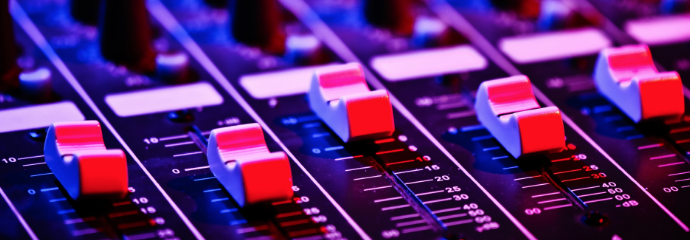| Graphic Notation |
This composer challenge is meant to expand your ideas about music and test your creativity. The time limit forces to you to simply create without thinking about editing or what you can or cannot logically do.
After you have completed your sketches, reevaluate them.
Think about how these ideas may work musically, how they can be improved upon, and how you would accomplish them. Think about how these ideas may change depending on scenario and location. How can you make your idea original?
Share your sketches and thoughts on the challenge in the comments below. NMR would love to hear about your ideas!
The NMR Composer Challenge
You have 10 minutes to sketch 5 musical ideas for the following scenarios:
1. You have a trio (percussion, electronic keyboard, and poet) that will perform for 30 minutes live online. You have one rehearsal.
2. You are performing a solo work using your primary instrument and recycled metal parts. The work needs to be ten minutes in length.
3. You have been asked to write a score for a wind ensemble. Only use graphic notation.
4. Sketch out an idea for solo soprano and tape using a combination of graphic notation and traditional notation.
5. Create a sketch for a tape piece utilizing random office sounds. The piece will be accompanied by a dancer. Sketch ideas for choreography.
6. Chose one electronic device or appliance (not a computer) that you own. Sketch a short piece for it.
7. Using dice, create a system to compose a work for an instrumental quartet through random operations.
8. Sketch a piece using only sounds created by your body. Sketch accompanying ideas for multimedia.
9. Sketch video ideas for a familiar classical work.
10. Sketch multimedia ideas for one of your existent works.
11. Sketch ideas for a piece using the audience as the primary music makers, voluntarily or involuntarily.
12. Put the names of a dozen random objects, voices, and instruments in a box. Select five. Create a piece.
13. Sketch ideas for a musical piece using improvisation for a string or woodwind quartet.
14. Sketch a piece to be performed on a playground, accompanied by actors.
15. Sketch a multimedia piece based on your favorite movie or video game.
16. Come up with three more unusual unique scenarios that stretch your ideas of music and composition.
------------
I hope you enjoyed these unorthodox ideas. These are meant to help you think outside the composer box of string quartets, electroacoustic music, and other new music confines. Music is sound, sound is music, and visuals play a part even when we think they don't. Employ the audience, move them from their comfort zone, increase improvisation. And expand.


Comments